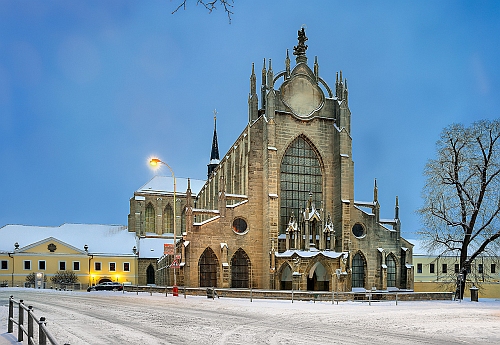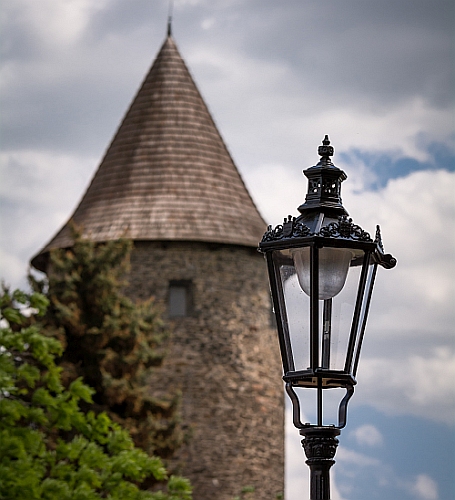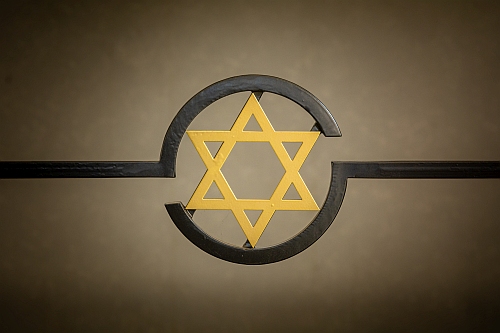St. Bartholomew´s Church and town walls complex
Kolín
The Decanal Church of St. Bartholomew is both the dominant of Kolín as well as the most valuable monument of this historic town. The early Gothic church was founded in the middle of the 13th century and its construction was carried out in several stages by orders of King Přemysl Otakar II and his successors, the last construction works were done at the beginning of 14th century.
The whole area of the so-called Cathedral Hill, which was revitalized extensively in 2018–2020, is truly unique. You will find here most notably the ossuary with rich ornamental decoration or the building of the former parish school, which houses an interactive exposition. The bell tower is a place where the cathedral treasure is kept and a lapidarium can be found. From atop it also offers a view of the town centre. The green baileys invite you to have a walk and relax in the herb garden or in the rosarium.
St. Bartholomew´s Church was founded on the site of an older settlement at the same time as the town and its walls in the 1360s. Within the span of a few decades, a three-nave church with a rectangular presbytery and a pair of octagonal towers was built. Between 1360 and 1380 under the direction of Peter Parler, a new high choir surrounded by triangular chapels was built on the site of the older presbytery, which meant Kolín had thus obtained one of the most original works of Gothic architecture of the Luxemburg period in Central Europe. The last stage in the construction development of the church took place in 1881–1911, when the church underwent works aiming to re-establish its Gothic style based on Josef Mocker’s project.
The Baroque ossuary was built in 1733. Its southern wall is adjacent to the main city wall from the 13th century and it stands in the area of the former main city cemetery near the Church of St. Bartholomew, with which its existence is inherently linked. The building today is of Baroque origin with 19th and 20th century modifications (lowering and changing the roof shape). Its main value lies in the installation of human bones in the interior in the form of a baroque “memento mori” (“remember death”) illustrating the transience of human life. In terms of the number of bones and the richness of ornamental decoration, it is a building comparable in the Czech Republic only to the ossuary in Sedlec near Kutná Hora. Since the interior contains the remains of the city’s inhabitants, the significance of the building for the history and historical awareness of Kolín is invaluable.
The bell tower was built at the beginning of the 16th century out of the necessity to place the bells outside the structurally compromised towers of St. Bartholomew’s Church and to express the townspeople pride. Its present appearance is the result of late Gothic and historicist rebuilding from 1872. The author of this project, which resulted in the changed shape of the gallery and the roof, was Josef Mocker, the leading architect of Central European historicism.
The old parish school stands right at the main town wall from the 13th century and is located in the area of the former main town cemetery near St. Bartholomew’s Church. The building in its present form is probably of Renaissance or Baroque origin with interior modifications carried out mainly after a fire in 1796. Although it stopped being used for educational purposes as early as the beginning of the 17th century, it still holds the title of the oldest school building in Kolín.
The main town wall present in the reconstructed section of the bailey is of early Gothic origin (2nd half of the 13th century) and is one of the best-preserved parts of the town fortifications of Kolín. A unique feature is a partial preservation of two fortification towers that include the ossuary and old parish school buildings incorporated into the town wall. The Gothic fortification included a bailey with a bailey wall preserved to this day. Even though the bailey wall was made lower in the past, many remarkable original details in its masonry have been preserved. During the reconstruction, which has only just been completed, fishtail arrow slits were discovered. In the area around the Church of St. Bartholomew there is a cemetery under the present pavement that existed there from the middle of the 13th century to the beginning of the 19th century. Moreover, during the last reconstruction, archaeological evidence of a settlement dating back as early as the 9th or 10th century was found at the place that would later become known as St. Bartholomew’s Hill. These facts testify to the uniqueness of the place and place it among the oldest settlement areas in Czech history.
The present building of the Dvořák Museum of Prehistoric Times was built in two construction stages. First, the town of Kolín had a narrow wing built as the new school building in 1611–1612 with the main façade facing Karlova Street and a passage to the bailey area. In 1792 the Kolín municipality responded to the growing number of pupils by adding a new cross wing on the south side. The building served as a school until 1860, after which it was used as a rental house. In 1913 it was handed over to the present Regional Museum in Kolín. The left part of the building’s cellar is now one of the entrances to the bailey.
You can visit Bartholomew’s Church and Town Walls Complex (Bartolomějské návrší) all year round, even during weekends. Current opening hours as well as other important information can be found here.
Tickets are available at the ticket office of the Regional Museum in Kolín, Červinkovský dům (Červinkovský house), Brandlova 27. Find out more about a day pass to all the buildings on St. Bartholomew’s Hill. Don’t forget to take a look at the possibility of buying a day pass to all the buildings on Bartolomějské návrší.


